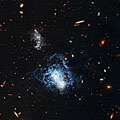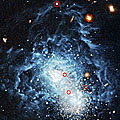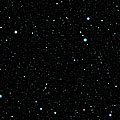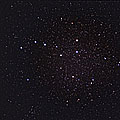16 October 2007
The NASA/ESA Hubble Space Telescope has found out the true nature of a dwarf galaxy that was reputed to be one of the youngest galaxies in the Universe.
Astronomers using Hubble have made observations of the galaxy I Zwicky 18 which seem to indicate that it is in fact much older and much farther away than previously thought.
| |||
I Zwicky 18 |
Back then it was an important finding for astronomers, since this young galaxy was also nearby and could be studied in great detail - something not easy with observations made across great distances when the universe was much younger.
| |||
I Zwicky 18 |
“Although the galaxy is not as youthful as was once believed, it is certainly developmentally challenged and unique in the nearby universe,” said astronomer Alessandra Aloisi from the European Space Agency/Space Telescope Science Institute, who led the new study. Spectroscopic observations with ground-based telescopes have shown that I Zwicky 18 is mostly composed of hydrogen and helium, the main ingredients created in the Big Bang. In other words, the stars within it have not created the same amounts of heavier elements as seen in other galaxies nearby.
Thus, the galaxy’s primordial makeup suggests that its rate of star formation was much lower than that of other galaxies of similar ages. The galaxy has been studied with most of NASA’s telescopes, including the Spitzer Space Telescope, the Chandra X-ray Observatory, and the Far Ultraviolet Spectroscopic Explorer (FUSE). However, it remains an outstanding mystery as to why I Zwicky 18 formed few stars in the past, and why it is forming so many new stars right now.
| |||
I Zwicky 18 |
Aloisi and her team discerned the new distance by observing blinking stellar distance-markers within I Zwicky 18. Some massive stars, called Cepheid variables, pulse with a regular rhythm. The timing of their pulsations is directly related to their brightness. By comparing their actual brightness with their observed brightness, astronomers can precisely measure their distance.
| |||
I Zwicky 18 |
Cepheid variables have been studied for decades, especially by Hubble, and have been instrumental in the determination of the scale of our universe. This is the first time, however, that variable stars with such few heavy elements were found. This may provide unique new insights into the properties of variable stars, which is now a topic of ongoing study.
Notes for editors:
The Hubble Space Telescope is a project of international cooperation between NASA and ESA.
Aloisi and her team’s results appear in the 1 October issue of the Astrophysical Journal Letters in ‘I Zw 18 Revisited with HST ACS and Cepheids: New Distance and Age’.
Aloisi’s team consists of Francesca Annibali, Jennifer Mack, and Roeland van der Marel of the Space Telescope Science Institute, Marco Sirianni of ESA and Space Telescope Science Institute, Abhijit Saha of the National Optical Astronomy Observatories, and Gisella Clementini, Rodrigo Contreras, Giuliana Fiorentino, Marcella Marconi, Ilaria Musella, and Monica Tosi of the Italian National Astrophysics Institutes in Bologna and Naples.







No comments:
Post a Comment